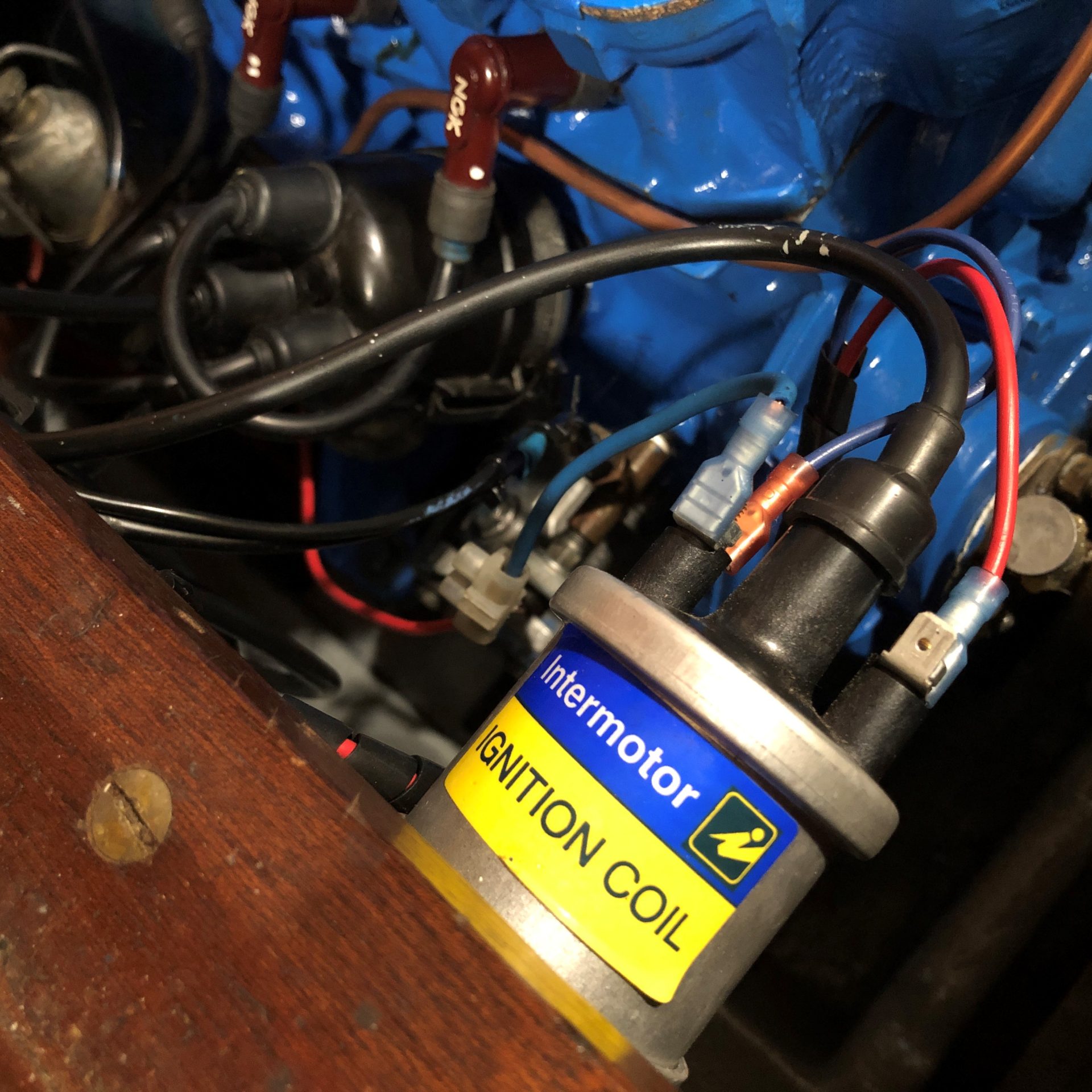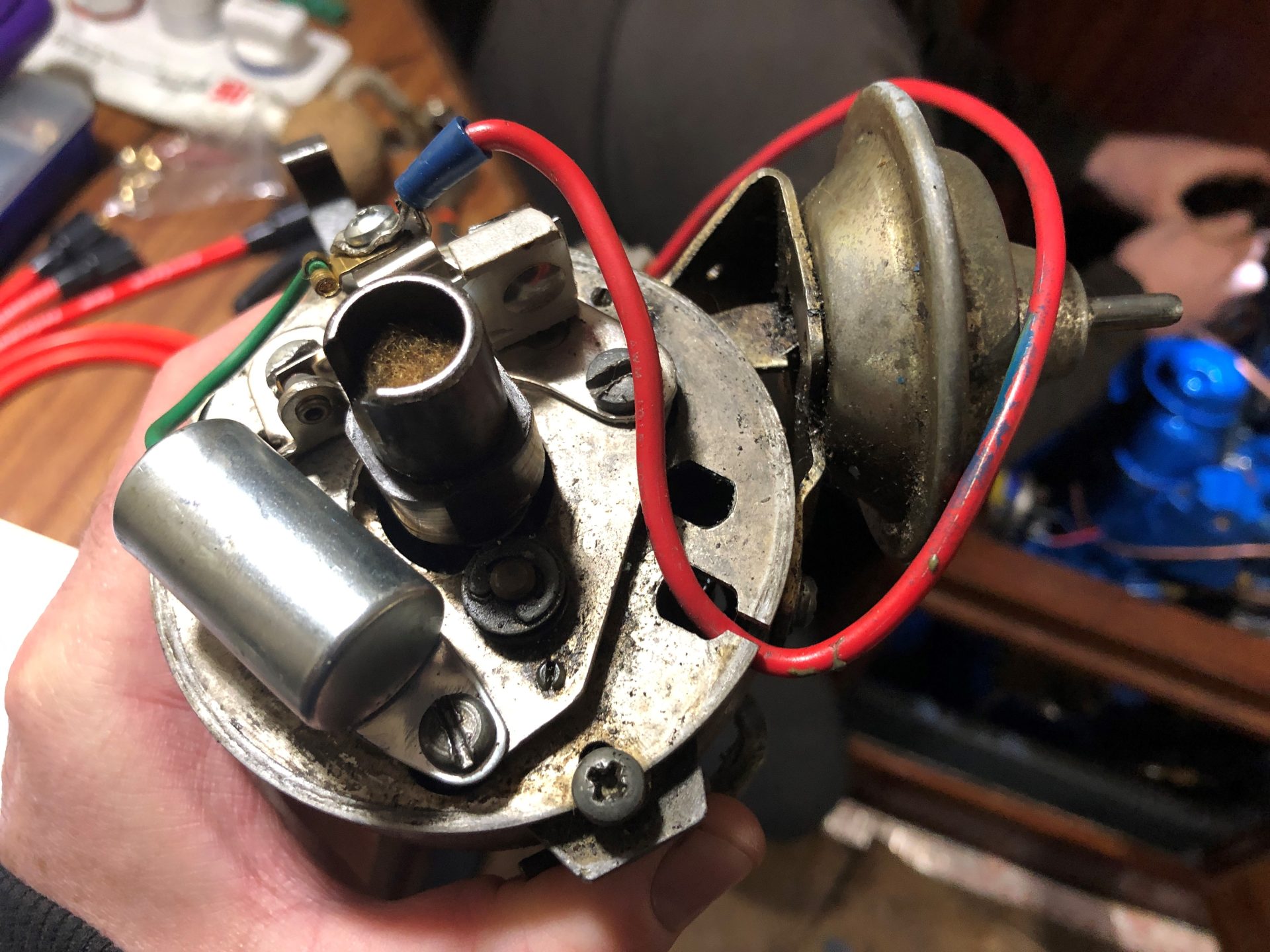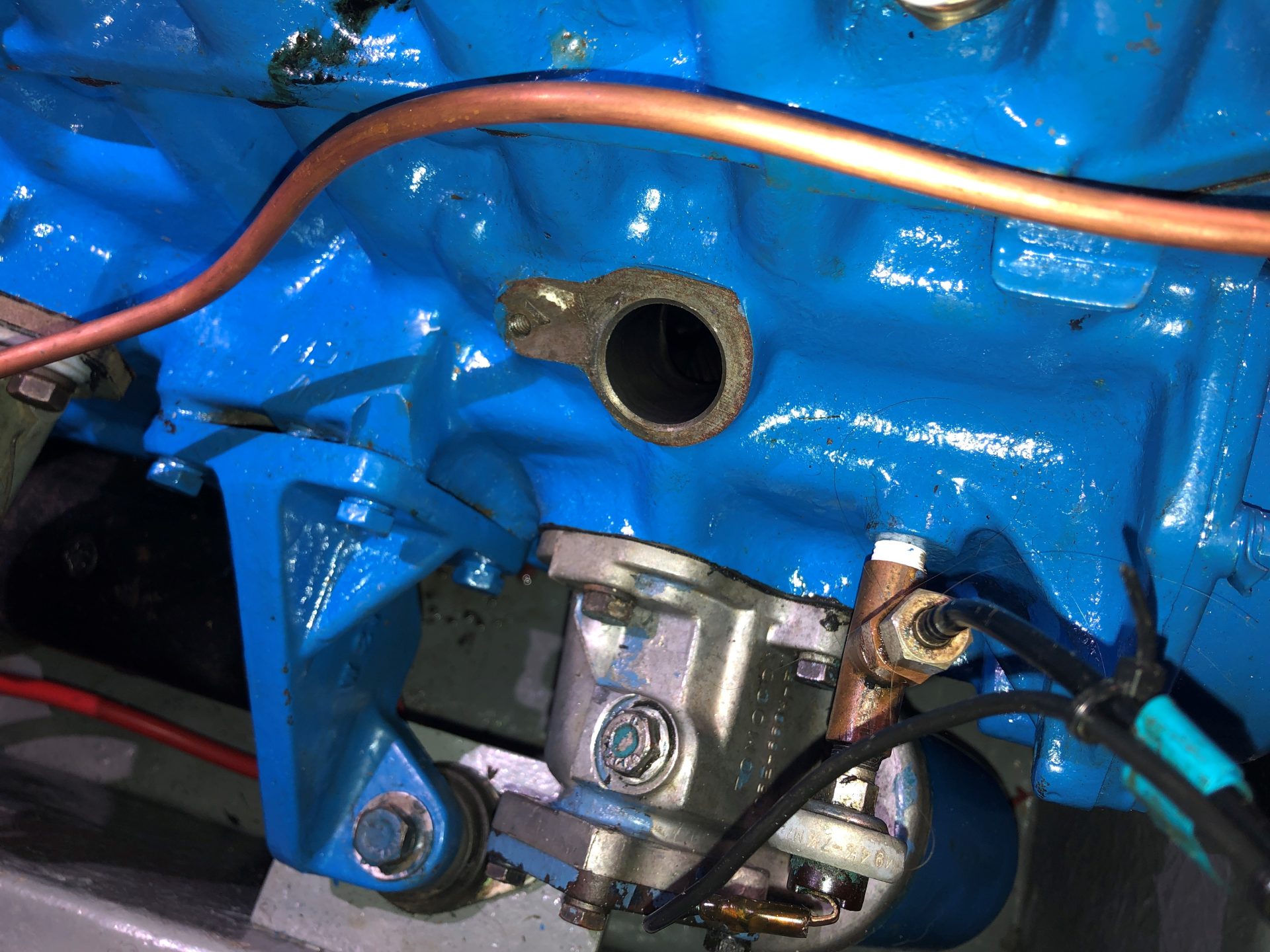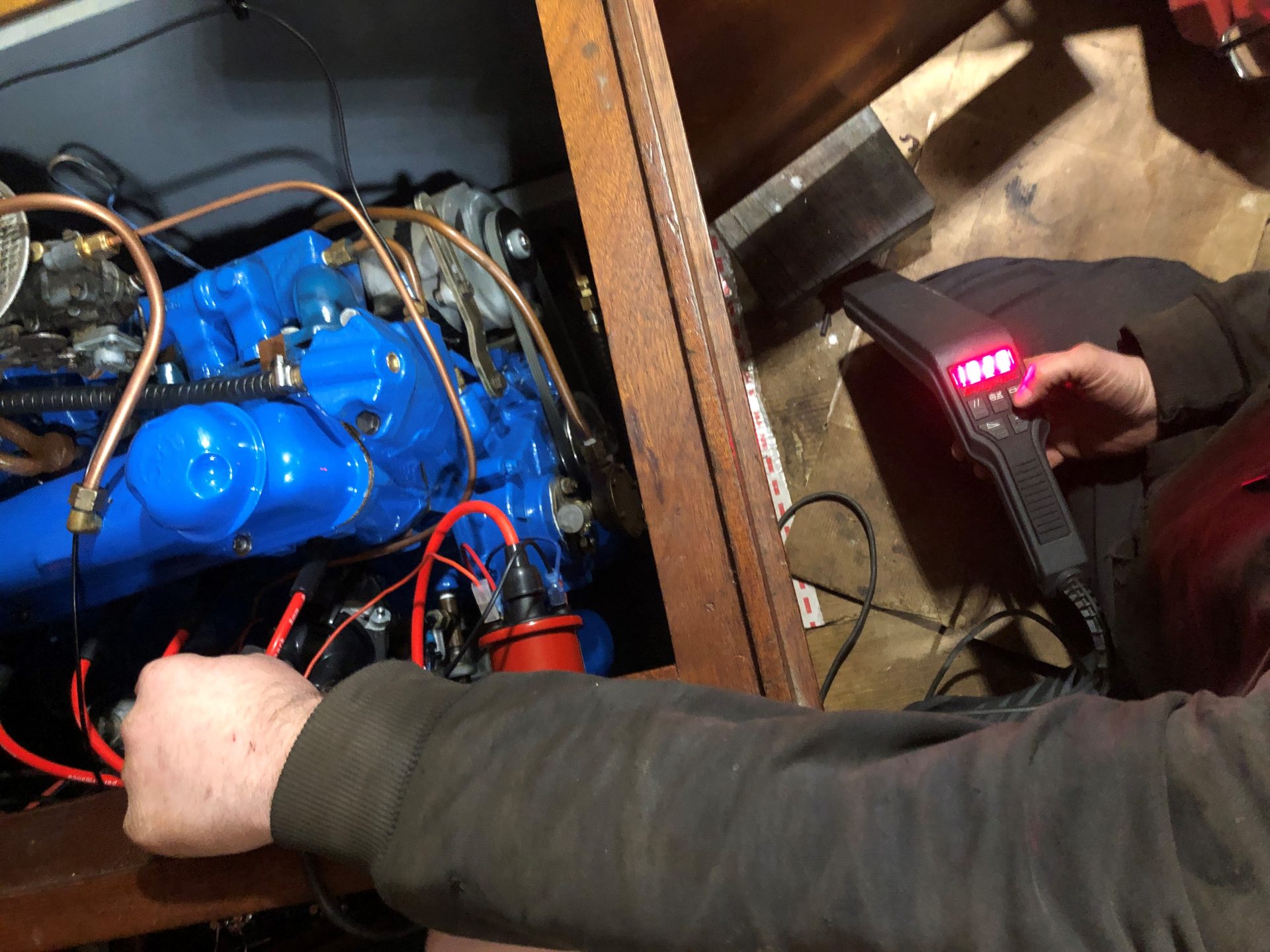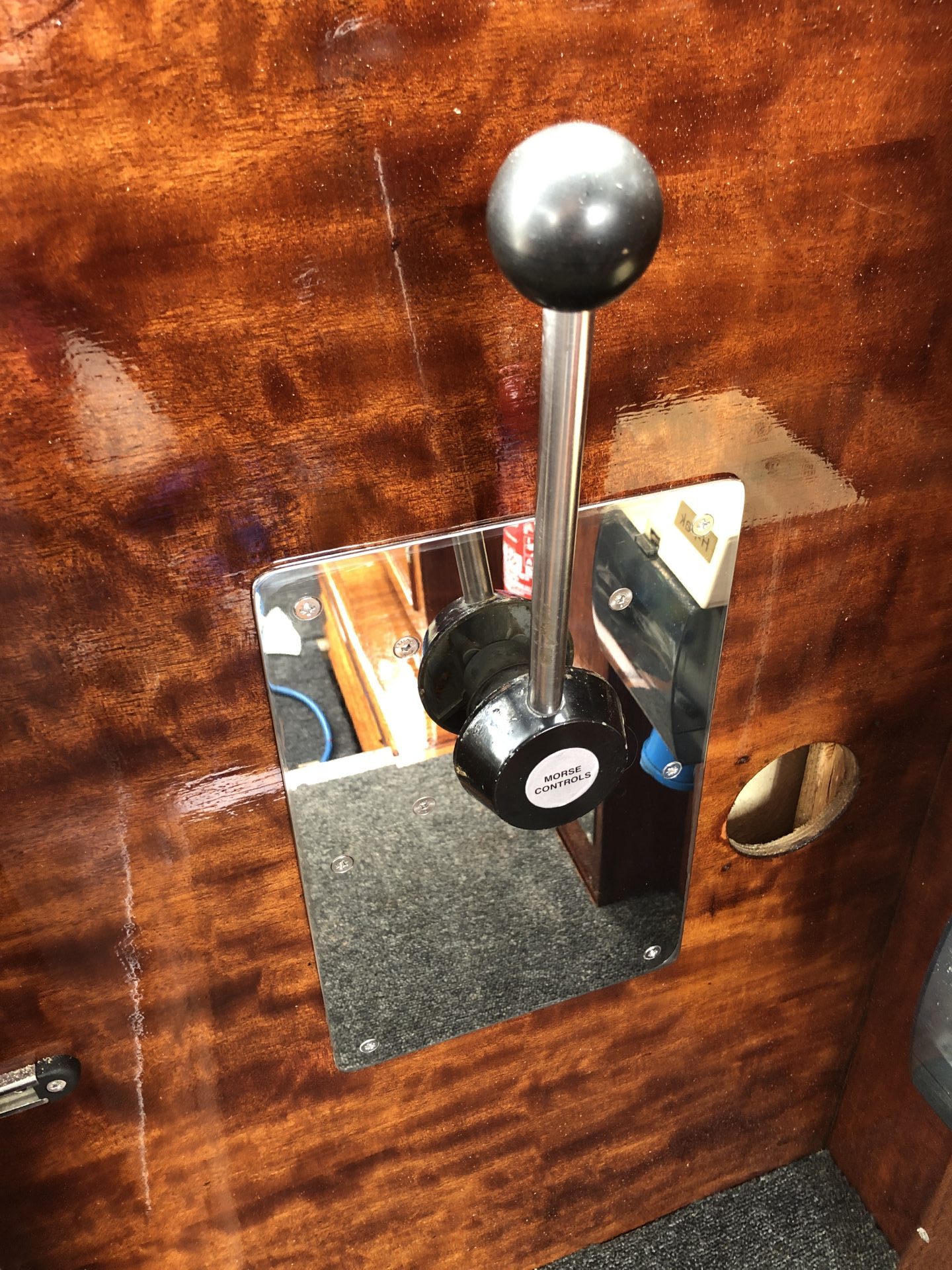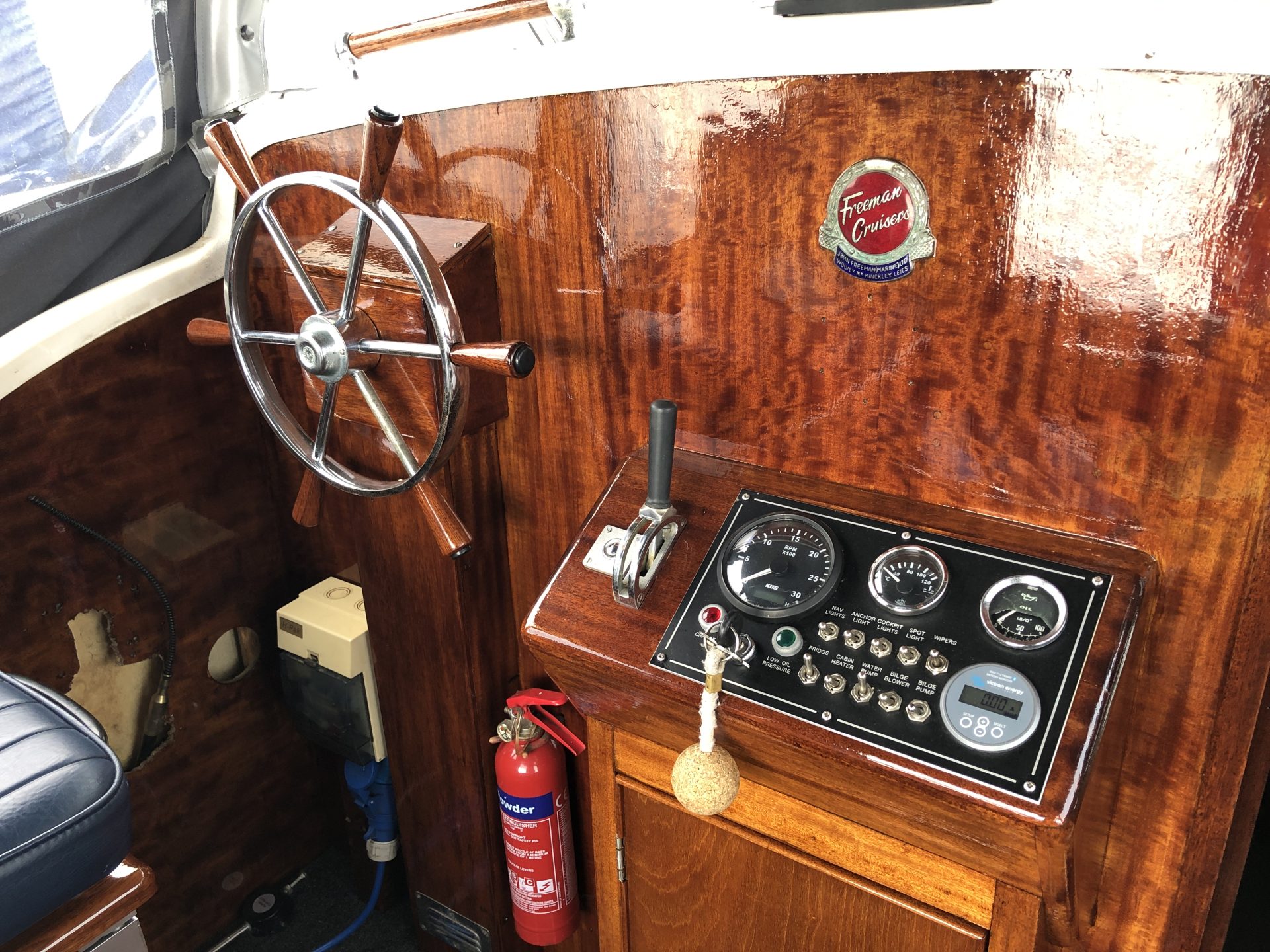by chris
Share
Before I refurbished my engine, it had been my plan to replace the points ignition with electronic, simply because on the face of it there would be less to go wrong. I purchased an Accuspark Ford Pre X-Flow distributor pack (F25D Top Cap) with a Red Sports Coil Non Ballast, a set of Pre Cross Flow red leads and a set of AC9C – 3 Prong Standard spark plugs. As I had converted my engine and electrics to a negative earth, that's the distributor I ordered.
The package arrived safely and intact and came with an extensive set of instructions. It also came with a multitude of warnings about having ordered the correct unit and to strictly not open anything unless completely sure. Clearly Accuspark have had issues in the past, particularly with the ignition module being wired with the incorrect polarity which will instantly destroy it. It's obviously sound advice but does put you on edge !
I kept the opened boxes on board for a couple of months prior to fitting as things don't often work out the way you planned (small things like re-building the engine come to mind !). During this time, moisture had lightly attacked the aluminium casting of the distributor and the snap-on springs that hold on the cap had also picked up some minor corrosion. The internals however were clean. The wires coming from the ignition module were very cheap and nasty and even now don't fill me with confidence. They were also very short, requiring me to make up an extension on the negative wire.
The supplied HT cable from coil to distributor was too short for where my coil was mounted. I'm sure the length is tailored to work in a Ford Anglia engine bay, so I did have to make up my own slightly longer cable which I had to order the parts for separately. The 8mm high performance silicone cable is 'interesting' to work with in that there is no copper core as such and it's not immediately obvious how to make it up. What you are given is an outer 'crimp' and a small 'shard' which is poked into the center of the core and bent around and held in place by the crimping action. Sadly I forgot to take a picture of this. You could most likely use a pair of pliers to make up this crimp but I bought a small green plastic crimping tool provided by Accuspark. This was somewhat useful and probably best used in a vice. I had to use a large mole wrench which made the task pretty fiddly.
It is worth pointing out that there's nothing wrong with a traditional points and condenser set up. In some ways, there's something good about being able to give them a quick clean or replacing them cheaply. I think the main benefit of electronic ignition is consistency as there is no arcing and pitting to account for. That said, I do carry a spare ignition module and the old distributor on board just in case.
Fitting the distributor was a matter of removing the old unit, replacing it with the new and making sure the rotor arm and distributor cap were in the correct positions. This is where my advice stops as Martin the expert took over and set up the timing at various RPM's with a very whizzy timing light so unfortunately this post stops some way short of being a tutorial.
I was able to take the opportunity to synchronise my tacho (rev counter) with Martin's timing light having also made sure the sense wire was connected to the correct side of the coil (which it wasn't previously).
On my previous outing with the boat, I was experiencing a few isolated mis-fires at higher revs and some sooting up of the plugs, particularly cylinder 2. It transpired that the old rotor arm was very sloppy and the distributor cap was showing a fair bit of wear. With a bit of fuel mixture adjustment and the new Accuspark distributor, I'm anticipating this problem being solved.
My initial thoughts on the Accuspark distributor is that it's built to a price (around £100). This is not a very high quality item but will most likely operate within specification. The cables to the ignition module are nasty and cheap. My feeling is that the saving on the cables by the manufacturer are an own-goal. It remains to be seen how reliable and durable the kit will be although I will be protecting the wires with additional cable wrap and buying a spare module just in case. It certainly seems to work and that's the main thing. How long for?, I'll keep you posted…


